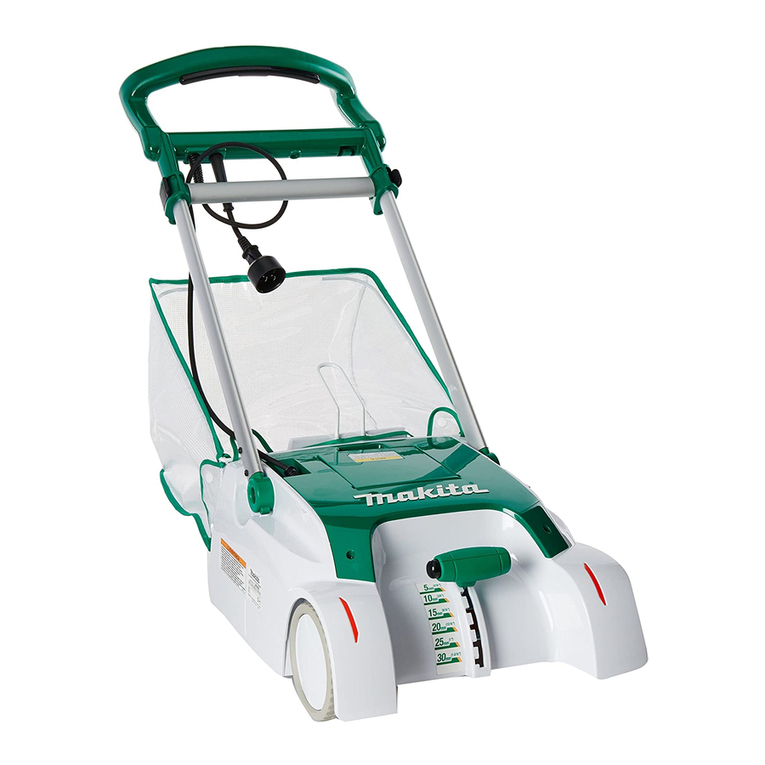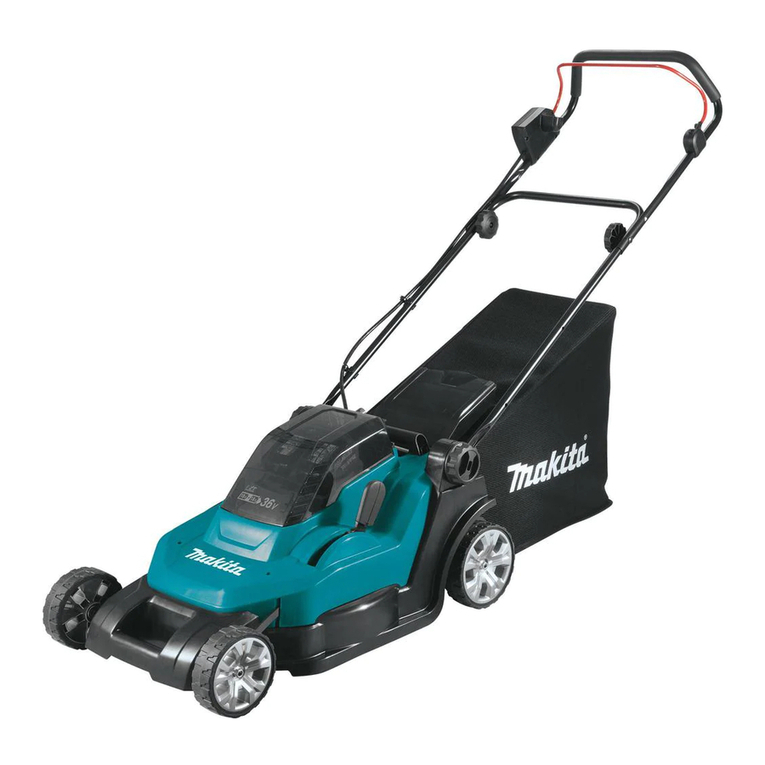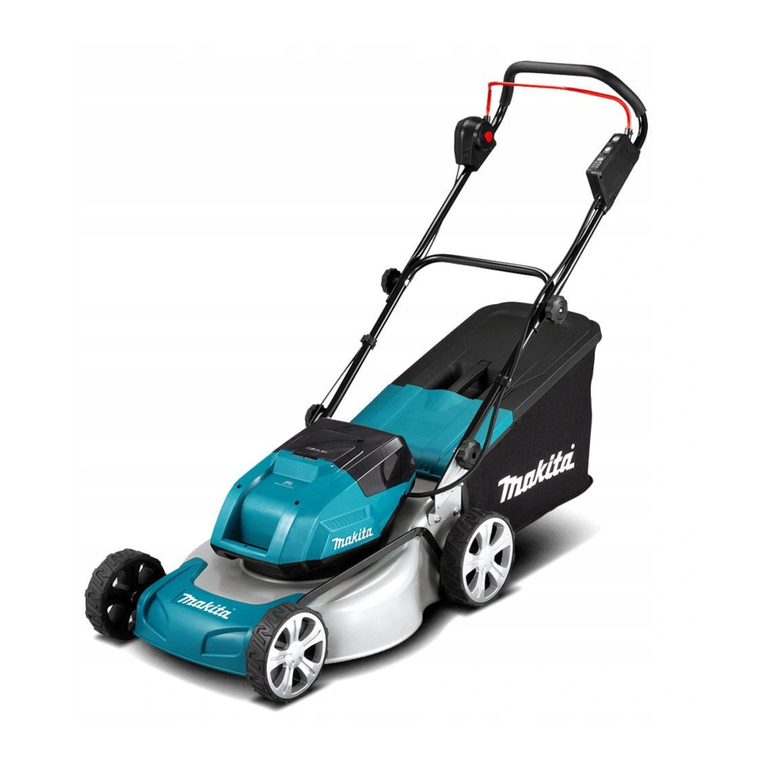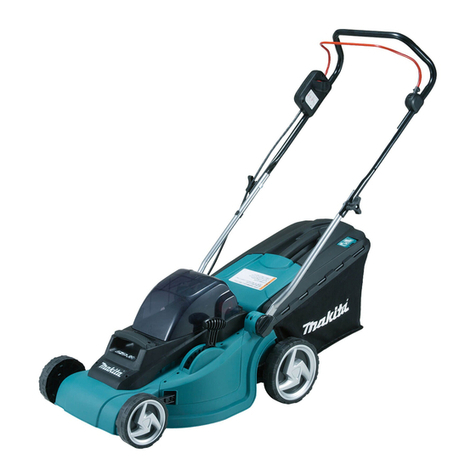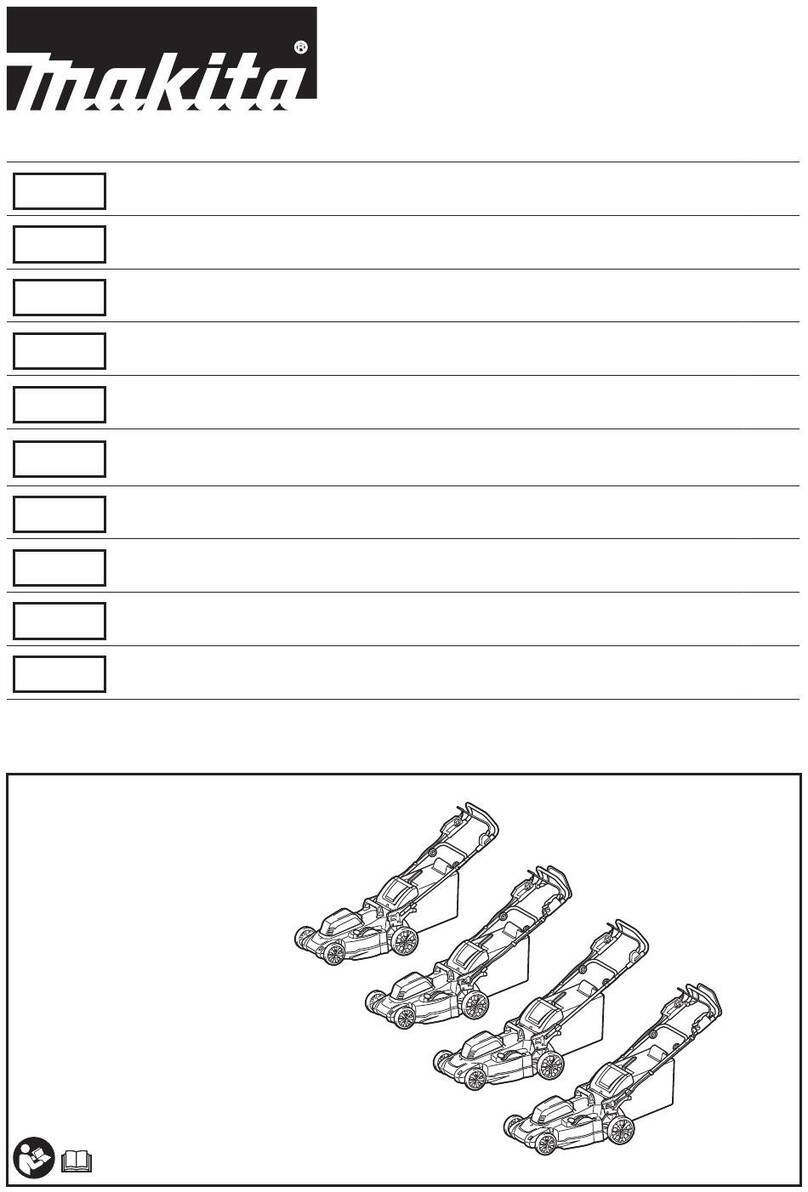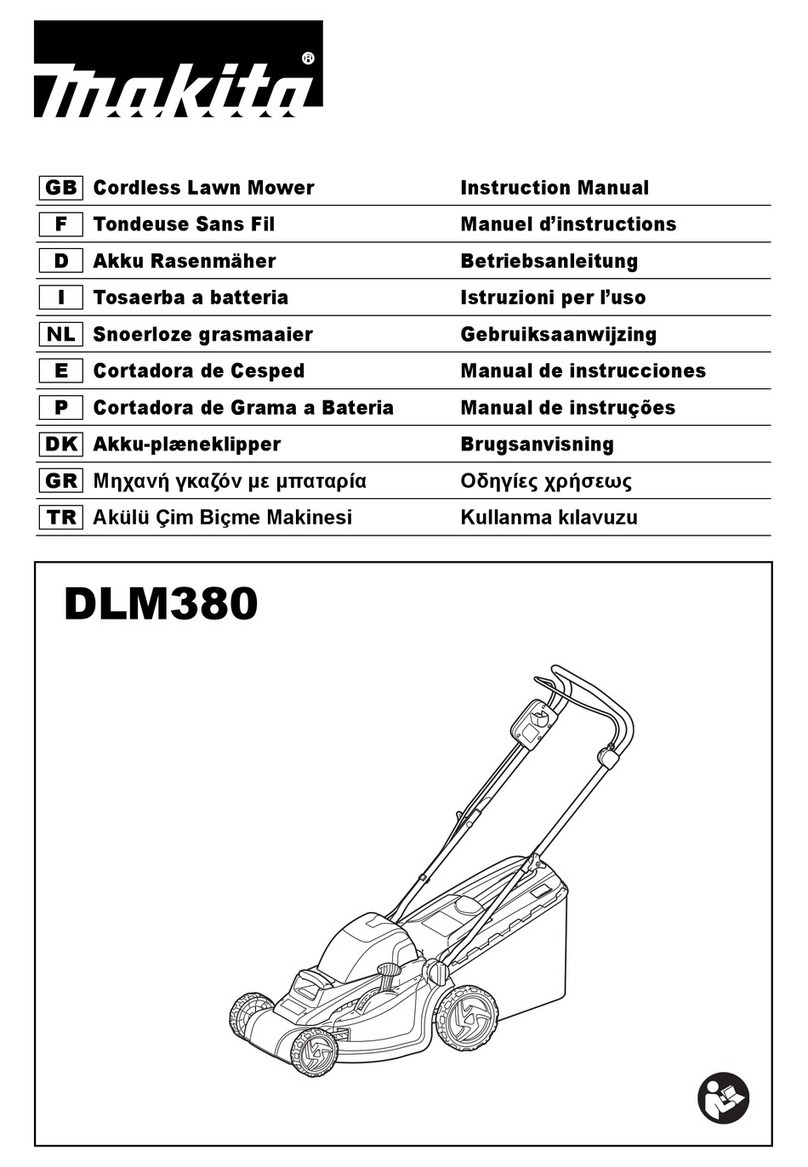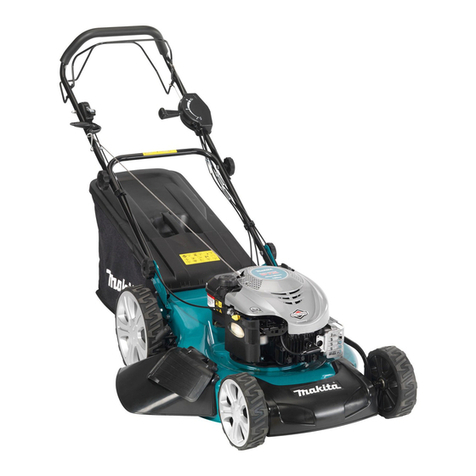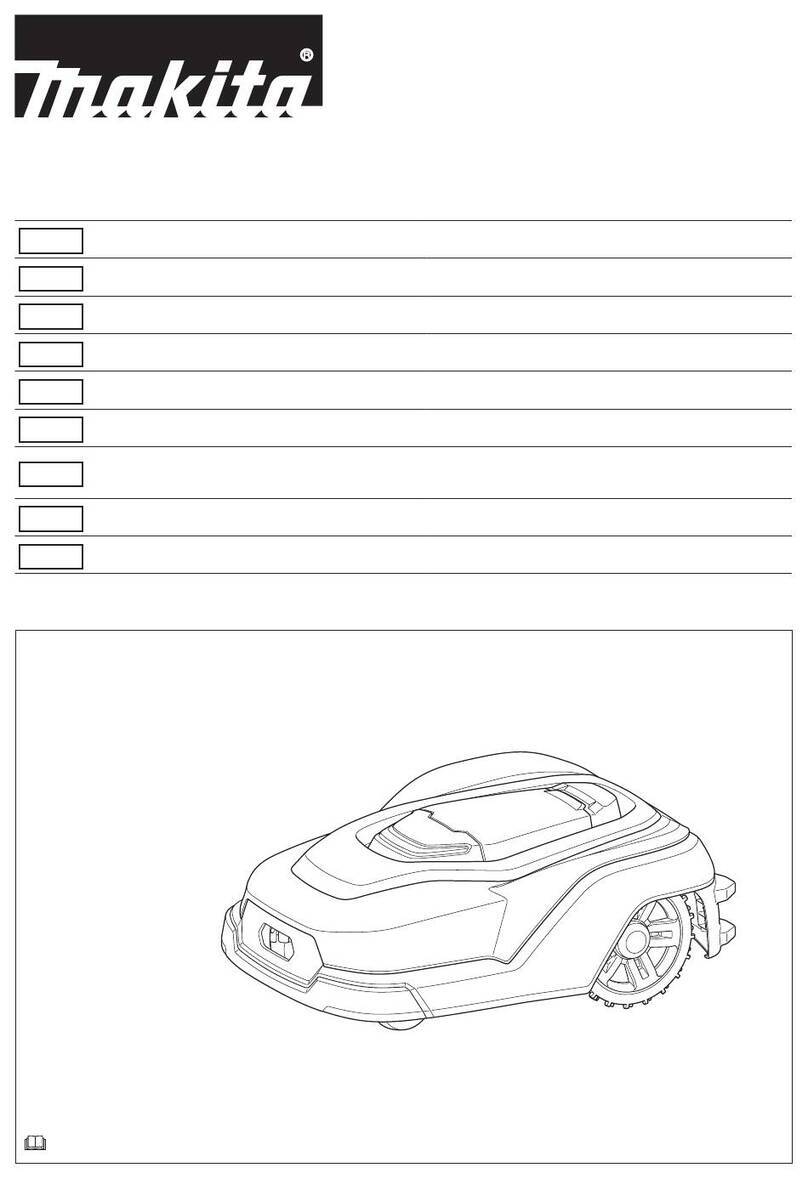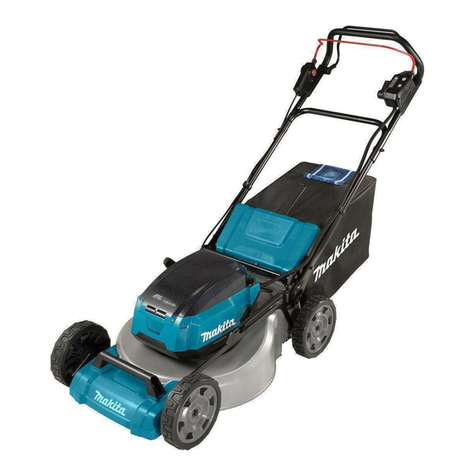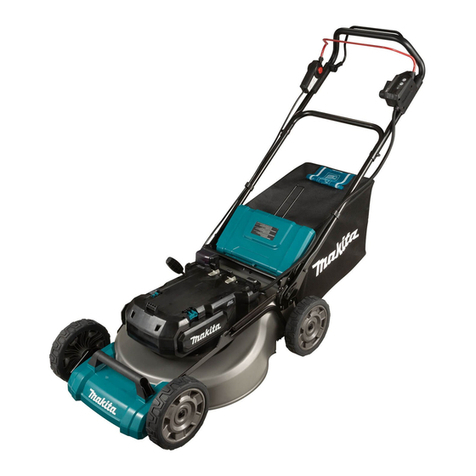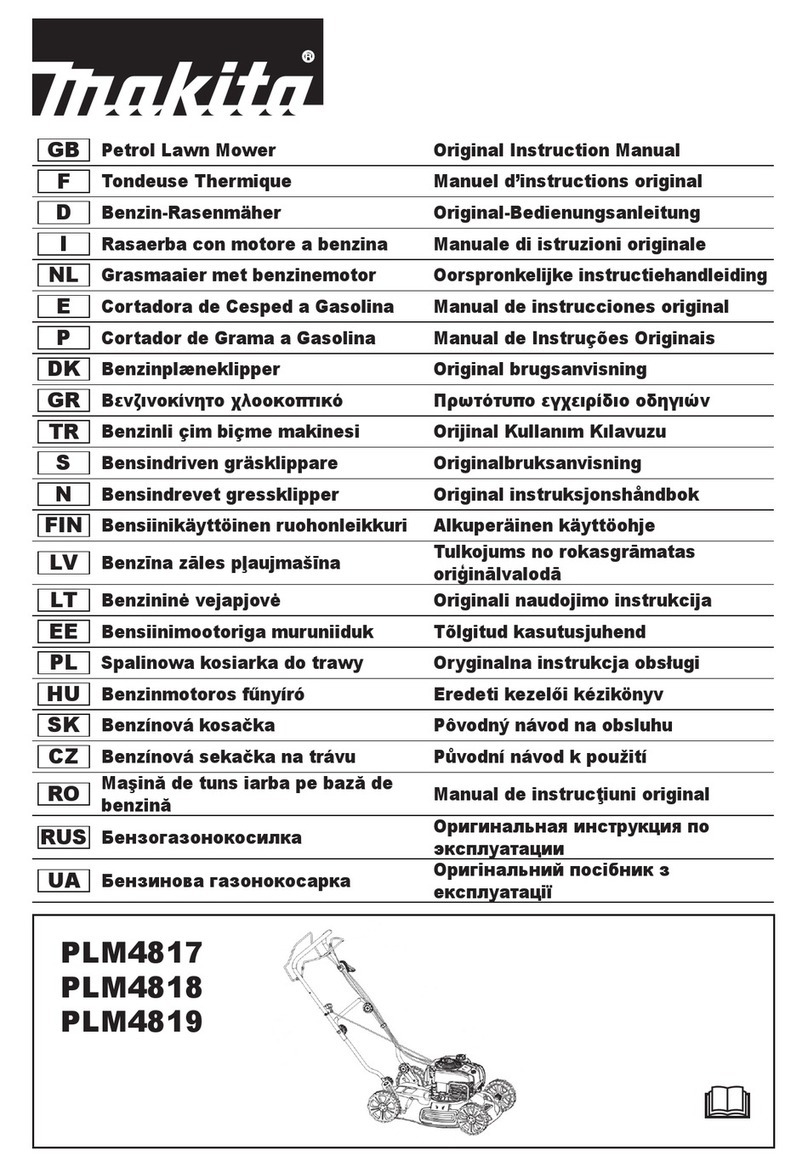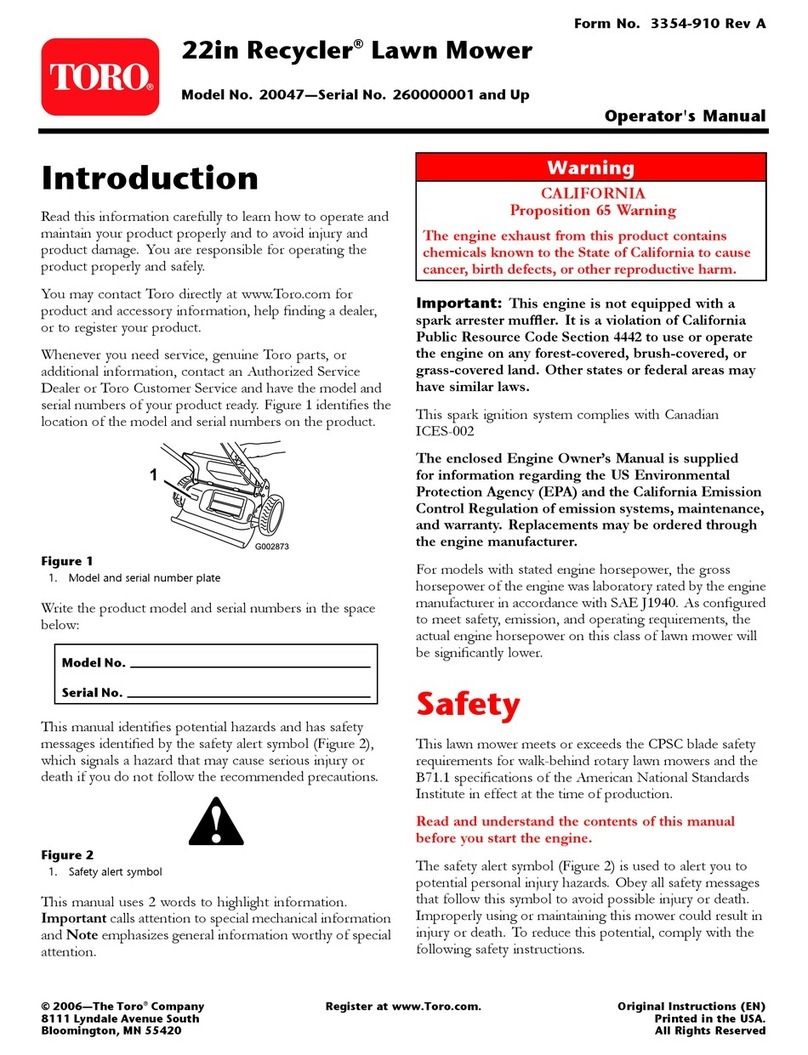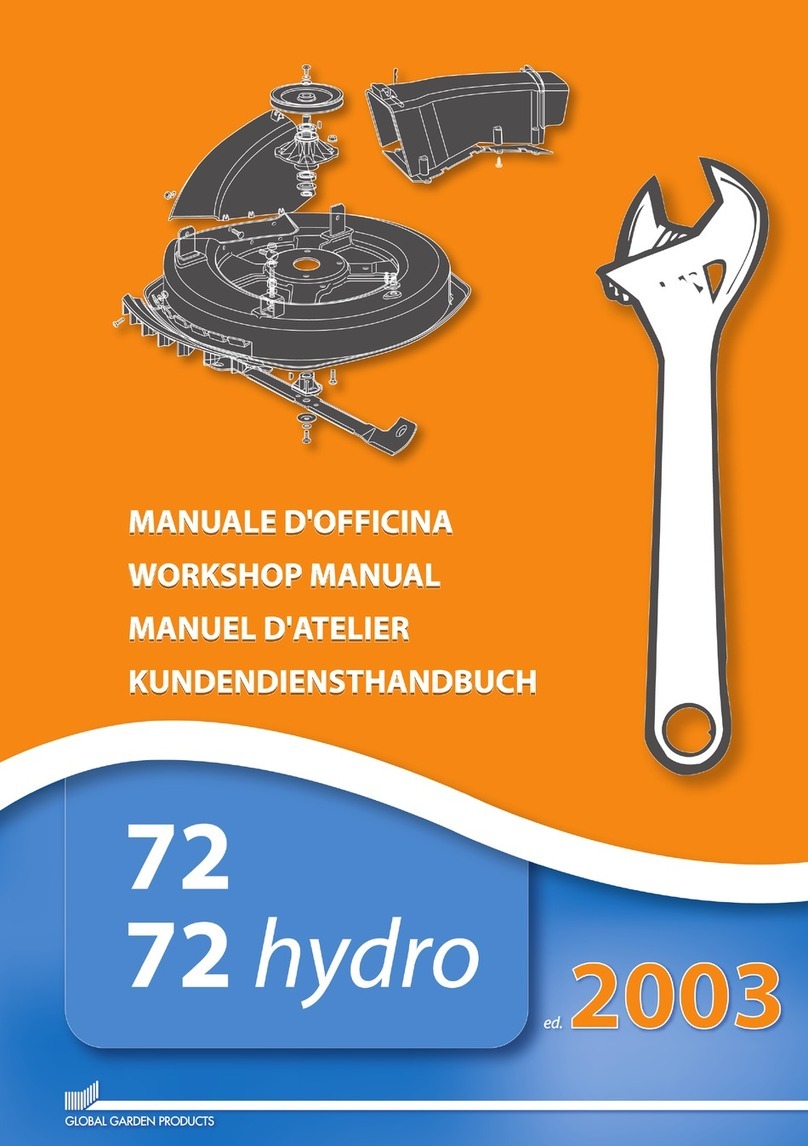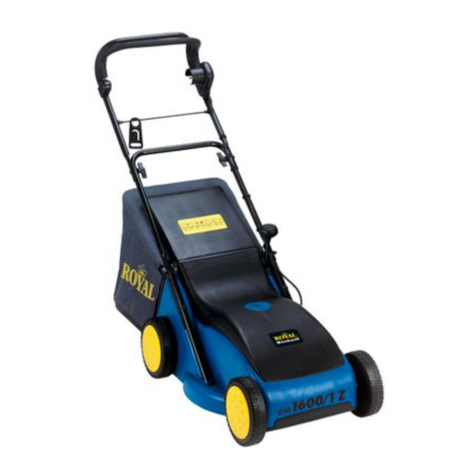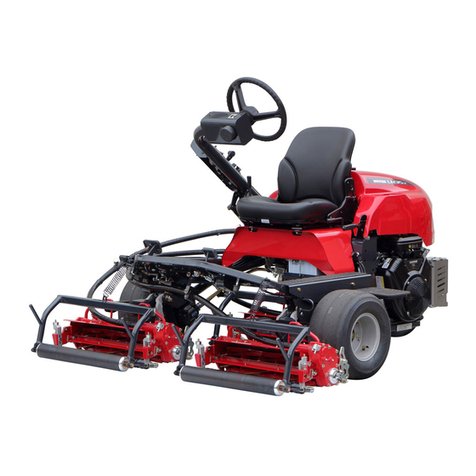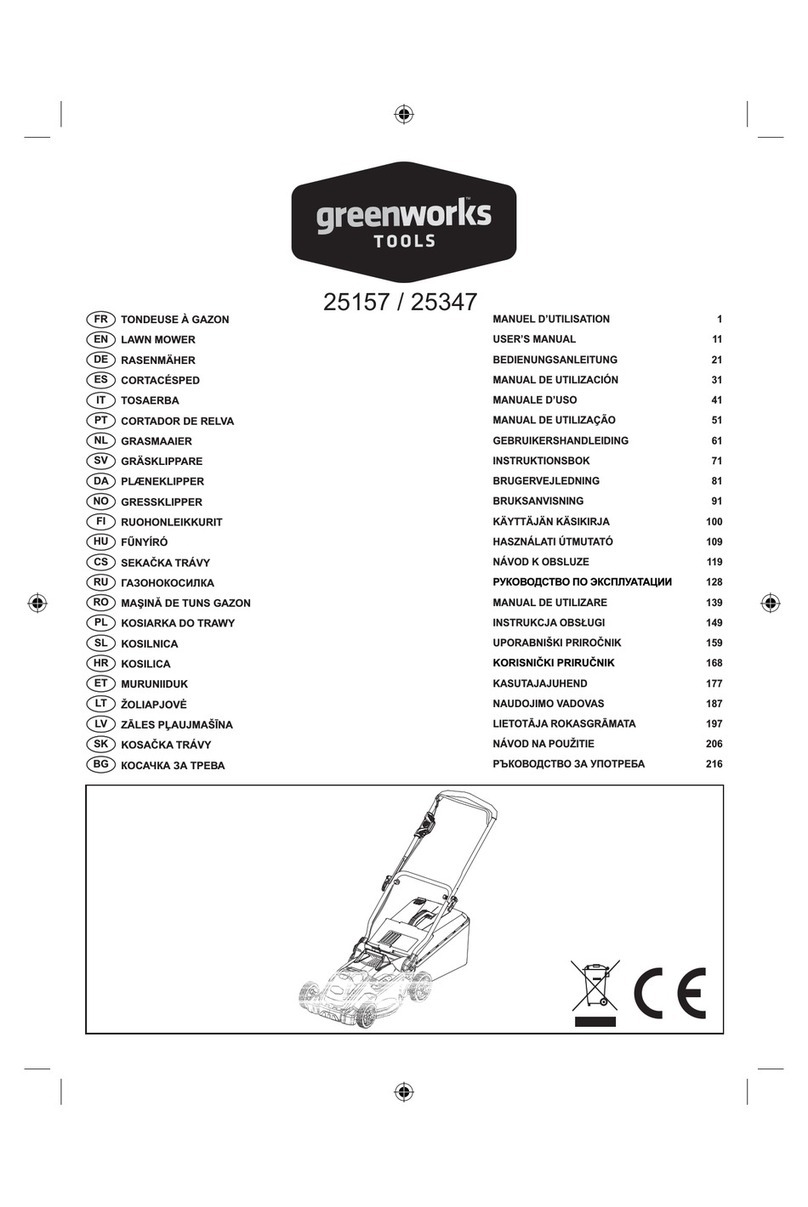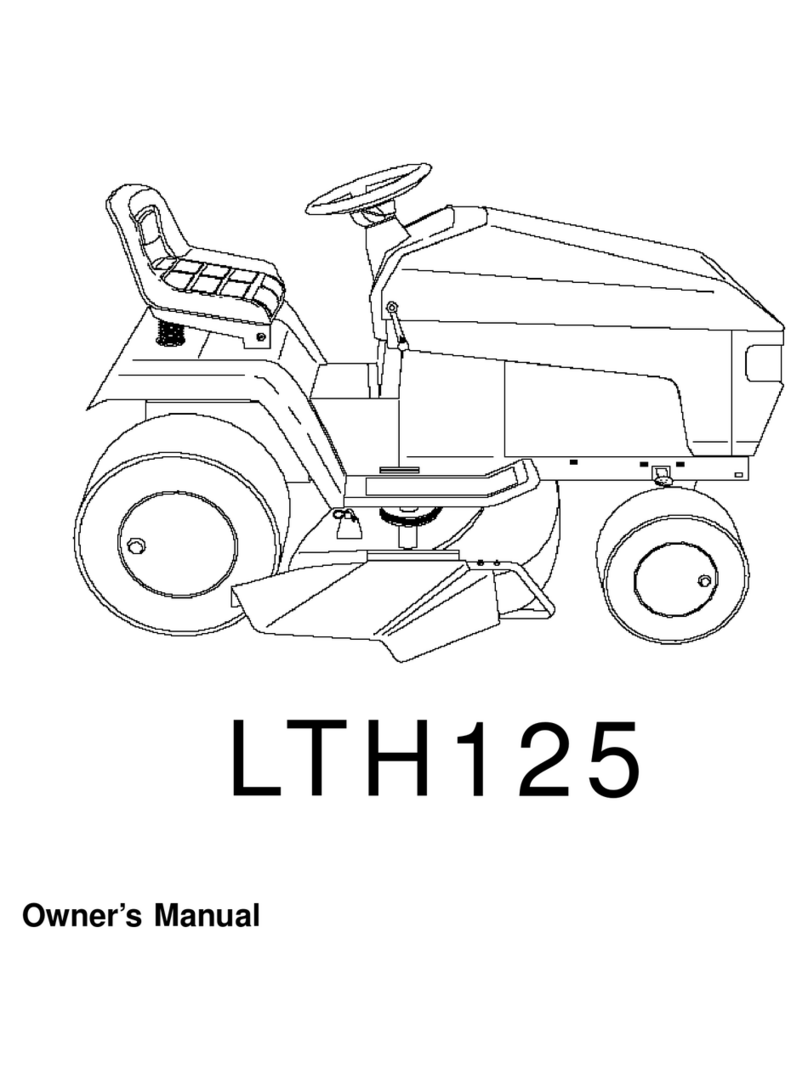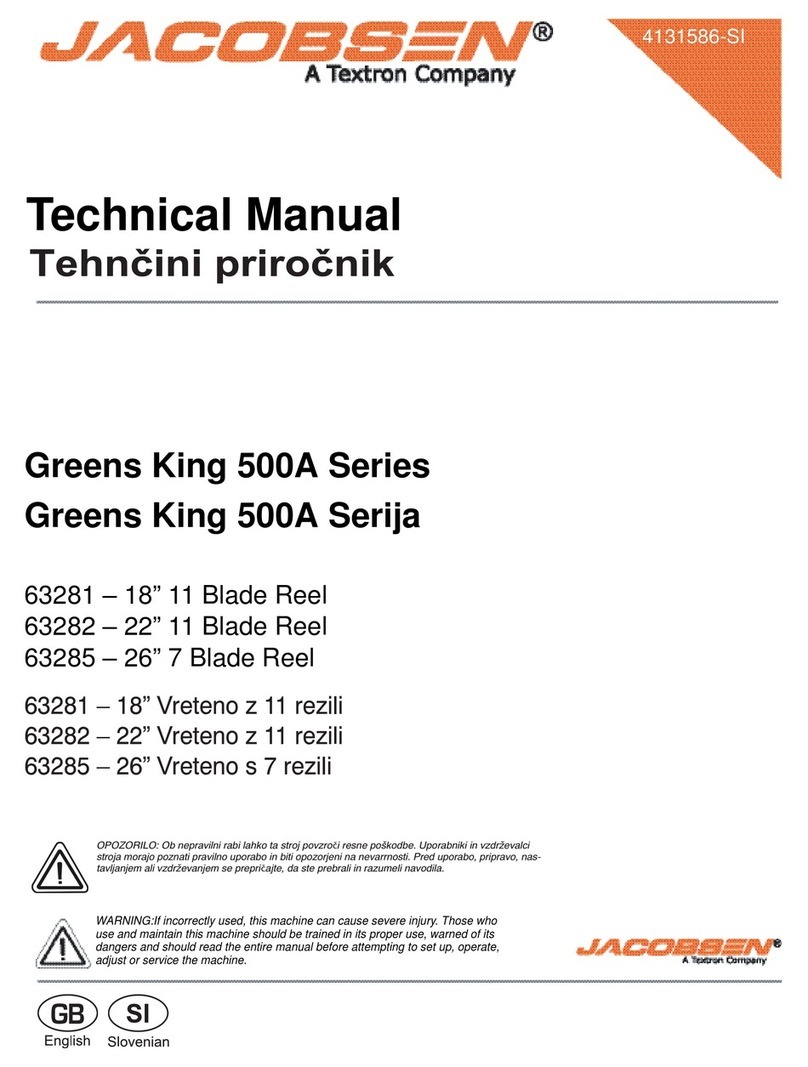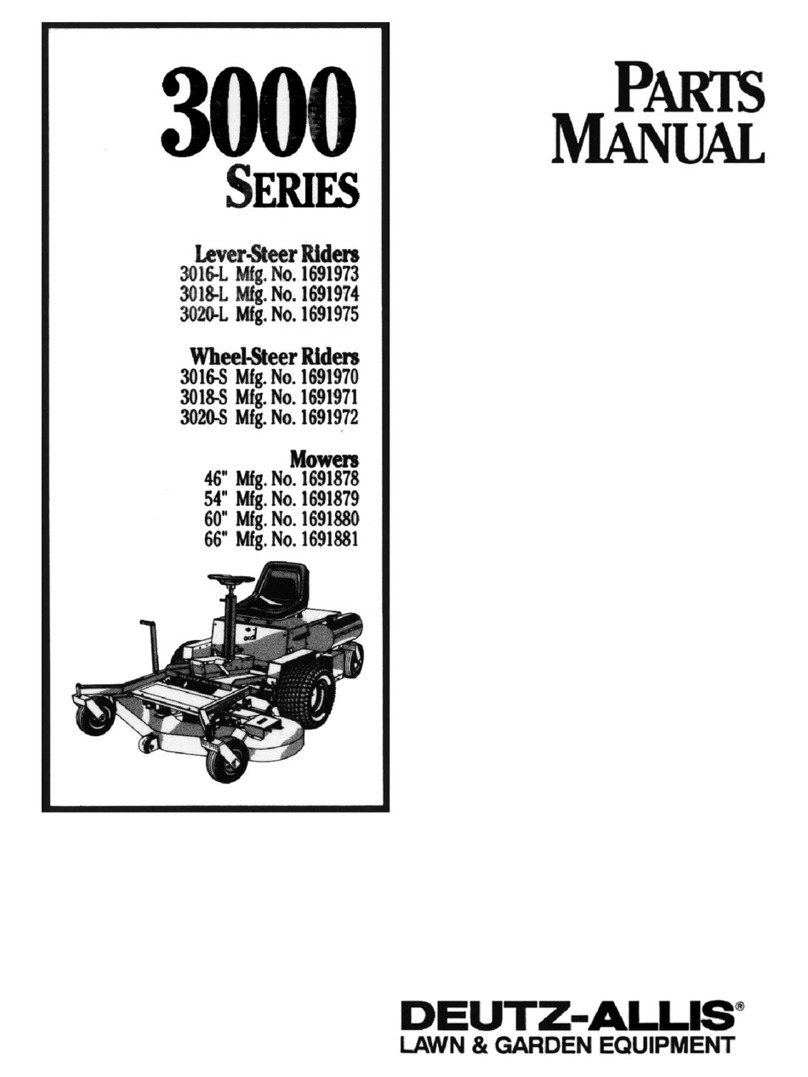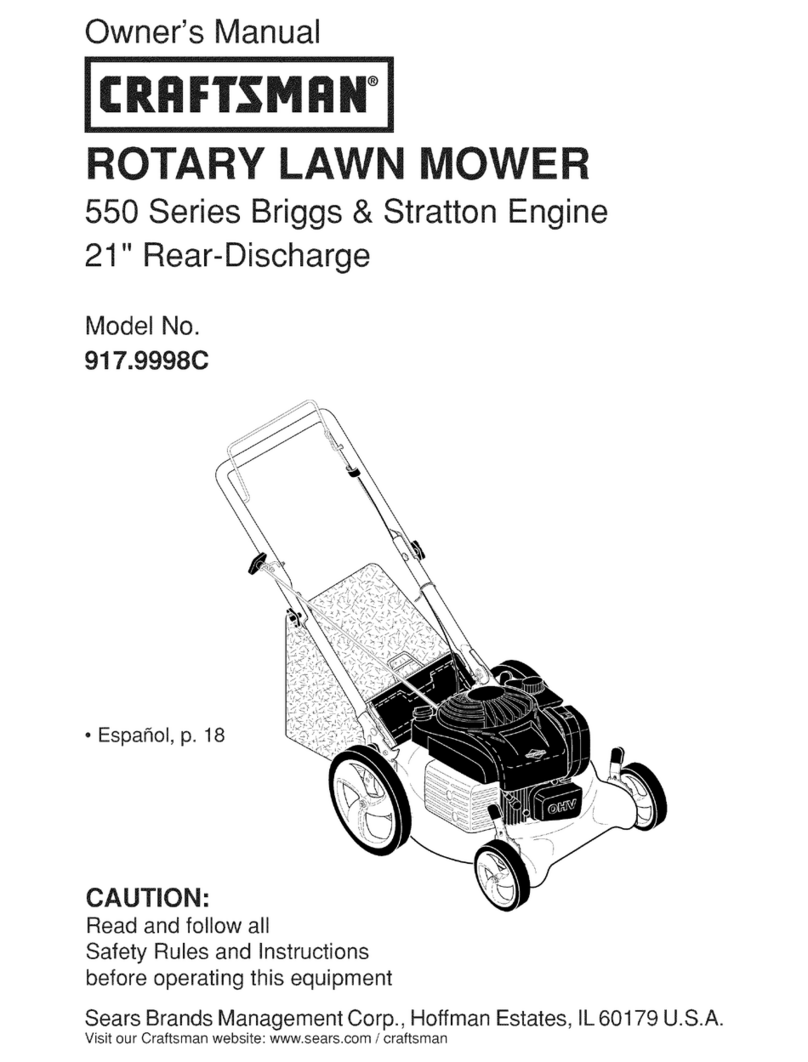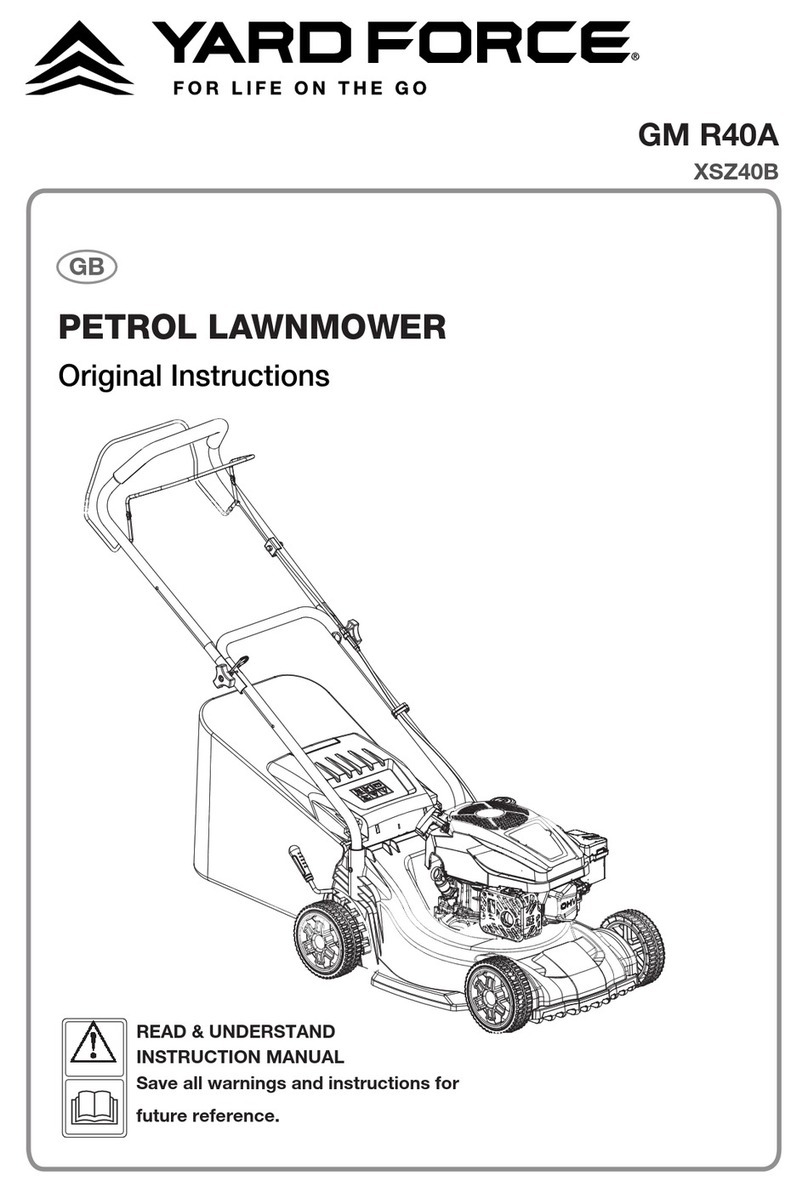
10 ENGLISH
25. If the mower starts to vibrate abnormally
(check immediately)
- inspect for damage,
- replace or repair any damaged parts,
- check for and tighten any loose parts.
26. Never direct discharged material toward
anyone. Avoid discharging material against a
wall or obstruction.
toward the operator. Stop the blade when crossing
gravel surfaces.
27. Do not pull the mower backwards unless
absolutely necessary.
to back the mower from a fence or other similar
obstruction, look down and behind before and
while moving backwards.
28.
to a complete stop before removing the grass
catcher.
29. When you use the machine on muddy ground,
wet slope, or slippery place, pay attention to
your footing.
30. Avoid working in poor environment where
increased user fatigue is expected.
31. Do not use the machine in bad weather where
visibility is limited.
32. Do not submerge the machine into a puddle.
33. When wet leaves or dirt adhere to the suc-
tion mouth (ventilation window) due to rain,
remove them.
34. Do not use the machine in the snow.
35.
clogged inside of the machine. Check the con-
dition of the machine regularly, and remove the
adhered grass as necessary.
36. When operating the machine, pay attention to
piping and wiring.
37. Do not use a corded power supply such as bat-
tery adapter or portable power pack with this
machine.
Maintenance and storage
1. Replace worn or damaged parts for safety.
Use only genuine replacement parts and
accessories.
2. Inspect and maintain the mower regularly.
3. When not in use, store the mower out of the
reach of children.
4. Keep all nuts, bolts, and screws tight to
be sure the equipment is in safe working
condition.
5. Check the grass basket frequently for wear or
deterioration. For storage, always make sure
the grass basket is empty. Replace a worn
grass basket with a new factory replacement
for safety.
6. Use only the manufacturer genuine blades
7. Be careful during adjustment of the mower
8. Check the blade mounting bolt at frequent
intervals for proper tightness.
9. Always allow the mower to cool down before
storing.
10. When servicing the blades be aware that, even
blades can still be moved.
11. Never remove or tamper with safety devices.
Check their proper operation regularly. Never
do anything to interfere with the intended
function of a safety device or to reduce the
protection provided by a safety device.
12. Do not leave the machine unattended outdoors
in the rain.
13. Do not wash the machine with high pressure
water.
14. When washing the machine, be sure to remove
the battery and lock key and close the battery
cover, and pour water toward the bottom of the
machine to which the blade is attached.
15. When storing the machine, avoid direct sun-
light and rain, and store it in a place where it
does not get hot or humid.
16. Perform inspection or maintenance in a place
where rain can be avoided.
17. After using the machine, remove the adhered
dirt and dry the machine completely before
storing. Depending on the season or the area,
there is a risk of malfunction due to freezing.
Battery tool use and care
1.
the manufacturer. A charger that is suitable for
2. -
nated battery packs.
3. When battery pack is not in use, keep it away
from other metal objects, like paper clips,
coins, keys, nails, screws or other small metal
objects, that can make a connection from one
terminal to another.-
4. Under abusive conditions, liquid may be
ejected from the battery; avoid contact. If con-
liquid contacts eyes, additionally seek medical
help.
irritation or burns.
5. Do not use a battery pack or tool that is dam-
6.
excessive temperature.-
7. Follow all charging instructions and do not
charge the battery pack or tool outside the
-
tions.
Electrical and battery safety
1.
possible special disposal instructions.


